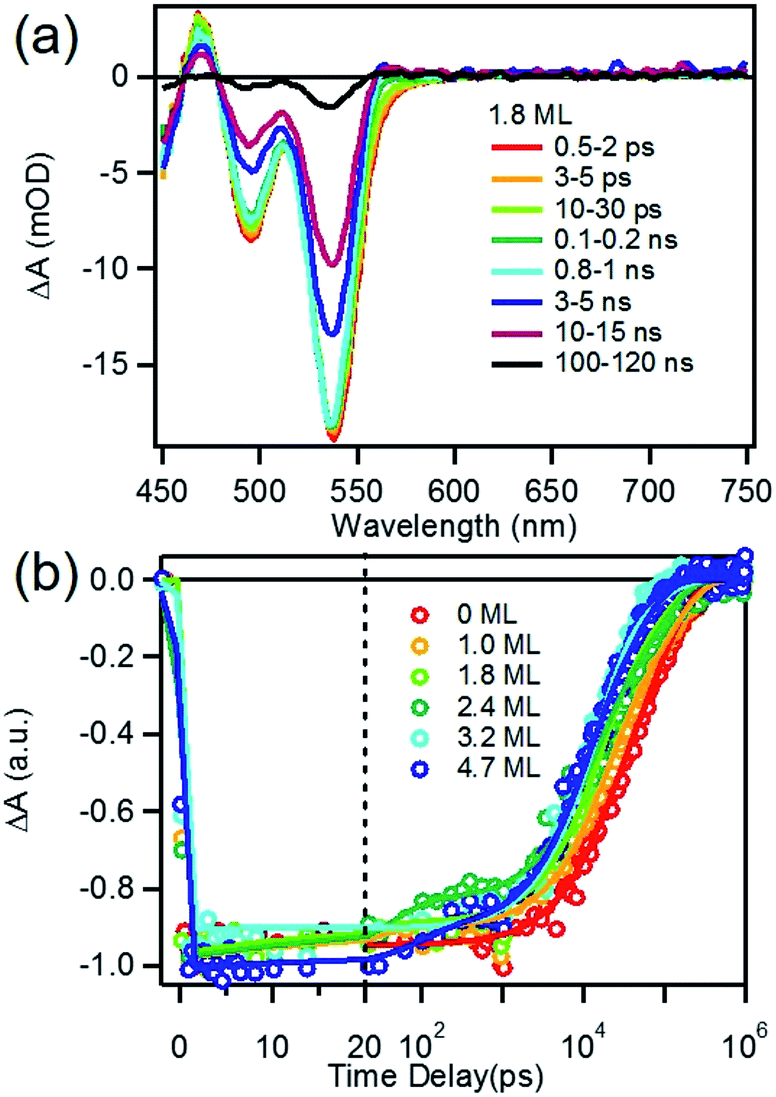
Scheme 1 (Left) schematic structure and (right) quasi-type II band alignment in CuInS 2/CdS core/shell QDs. In principle, these offsets allow the formation of quasi-type II core/shell QDs where holes are well confined in CuInS 2 and electrons are delocalized among CuInS 2 and CdS ( Scheme 1). 35,39,40 The CB and VB offsets between CuInS 2 and CdS are ∼0.05 eV and 0.95 eV ( Scheme 1), 41 respectively. However, for photovoltaic and photocatalytic applications, (quasi-)type II QDs are more suitable because their (partially) separated electron and hole wavefunctions can significantly prolong single and multiple exciton lifetimes. 4,16,24,38 It is well known that CuInS 2/ZnS QDs have type I band alignment where both the lowest energy electron and hole wavefunctions are confined in the core so that the effect of surface states is reduced. For CuInS 2 QDs, it has been demonstrated that surface trapping can be suppressed and therefore photoluminescence (PL) quantum yields (QYs) can be strongly enhanced by coating with ZnS or CdS shells. 25,27–33 Depending on the relative alignment of the CB and valence band (VB) positions of the core and shell materials, core/shell QDs can be type I (in which the CB and VB of the core are nested between those of the shell 25,29), type II (when they are staggered with respect to each other 34,35), or quasi-type II (when either their CB or VB band edge positions are similar 26,36,37). 25,26 Furthermore, core/shell QDs can lead to new properties that cannot be achieved in single component QDs. Coating QDs with another material to form core/shell hetero QDs has been an effective approach to mitigating surface trapping states. In addition to off-stoichiometry defects in the bulk, surface states are also found to play a significant role in carrier trapping for CuInS 2 QDs, 4,16,24 which reduces charge separation efficiencies in related photovoltaic and photocatalytic devices. These off-stoichiometry defects, typical for CuInS 2 because of its ternary chemical composition, 19 make its excited state dynamics more complicated and much less well understood than prototypical CdSe QDs. 4,17,18 Additionally, there have been reports about other defects, 9,19 such as sulfur vacancy (V S), indium vacancy (V In), interstitial copper (Cu i), copper site substituted by indium (In Cu), and indium site substituted by copper (Cu In). 11 The radiative lifetime in CuInS 2 QDs is found to be surprisingly long (∼300 ns), 4,12–17 which was generally attributed to slow recombination between the conduction band (CB) edge electrons and holes trapped in defect states likely associated with Cu vacancies (V Cu). CuInS 2 QDs sensitized solar cells (QDSSCs) with power conversion efficiencies higher than 5% have been reported, 3,6,10 exceeding those of CdSe QDSSCs. 4,9 For these reasons, CuInS 2 QDs have been extensively studied in recent years as an alternative to conventional II–VI CdX (X = S, Se, Te) QDs. 7–9 Moreover, recently developed non-injection and high chemical yield colloidal syntheses of mono-dispersed CuInS 2 QDs are promising for scaled-up production in industry. 2–6 The absorption and emission of colloidal CuInS 2 quantum dots (QDs) can cover most of the visible and near IR range by tuning their sizes. Introduction Ternary chalcopyrite CuInS 2 has a direct bulk bandgap of 1.5 eV, 1 which matches well with the solar spectrum for photovoltaic or photocatalytic applications.

These demonstrated advantages, including passivated trap states, long single and multiple exciton lifetimes, suggest that quasi-type II CuInS 2/CdS QDs are promising materials for photovoltaic and photocatalytic applications. Because of reduced electron–hole overlap in quasi-type II QDs, Auger recombination of multiple excitons was also suppressed and the bi-exciton lifetime was prolonged to 42 ps in CuInS 2/CdS QDs from 10 ps in CuInS 2 QDs. These trap states could be effectively passivated by forming quasi-type II CuInS 2/CdS core/shell QDs, leading to a single-exciton (with electrons delocalized among CuInS 2/CdS CB and holes localized in V Cu) half lifetime of as long as 450 ns. In this work, using ultrafast spectroscopy, we showed that both conduction band (CB) edge electrons and copper vacancy (V Cu) localized holes were susceptible to surface trappings in CuInS 2 QDs. However, compared with the well-established photophysics in prototypical CdSe QDs, much less is known about the excited properties of CuInS 2 QDs. Ternary chalcopyrite CuInS 2 quantum dots (QDs) have been extensively studied in recent years as an alternative to conventional QDs for solar energy conversion applications.


 0 kommentar(er)
0 kommentar(er)
